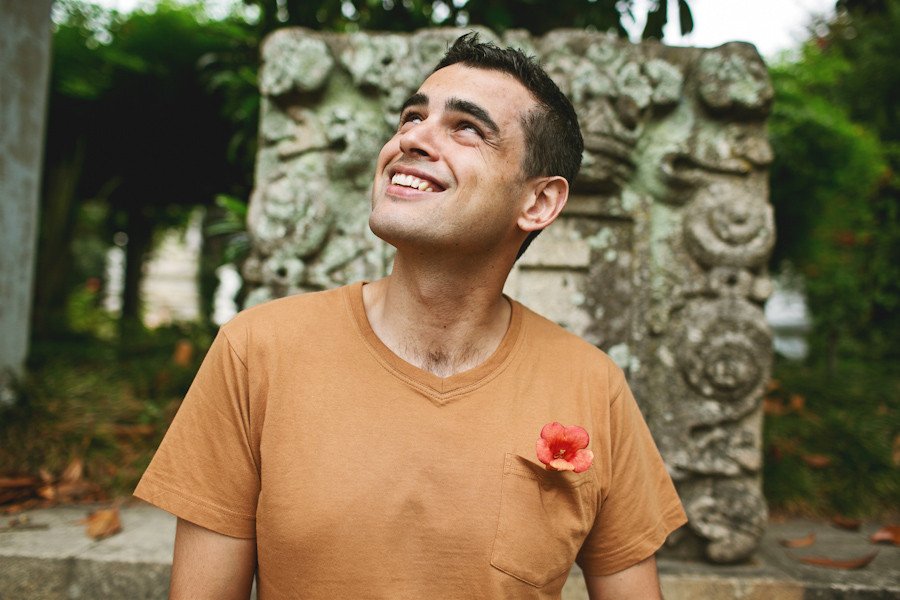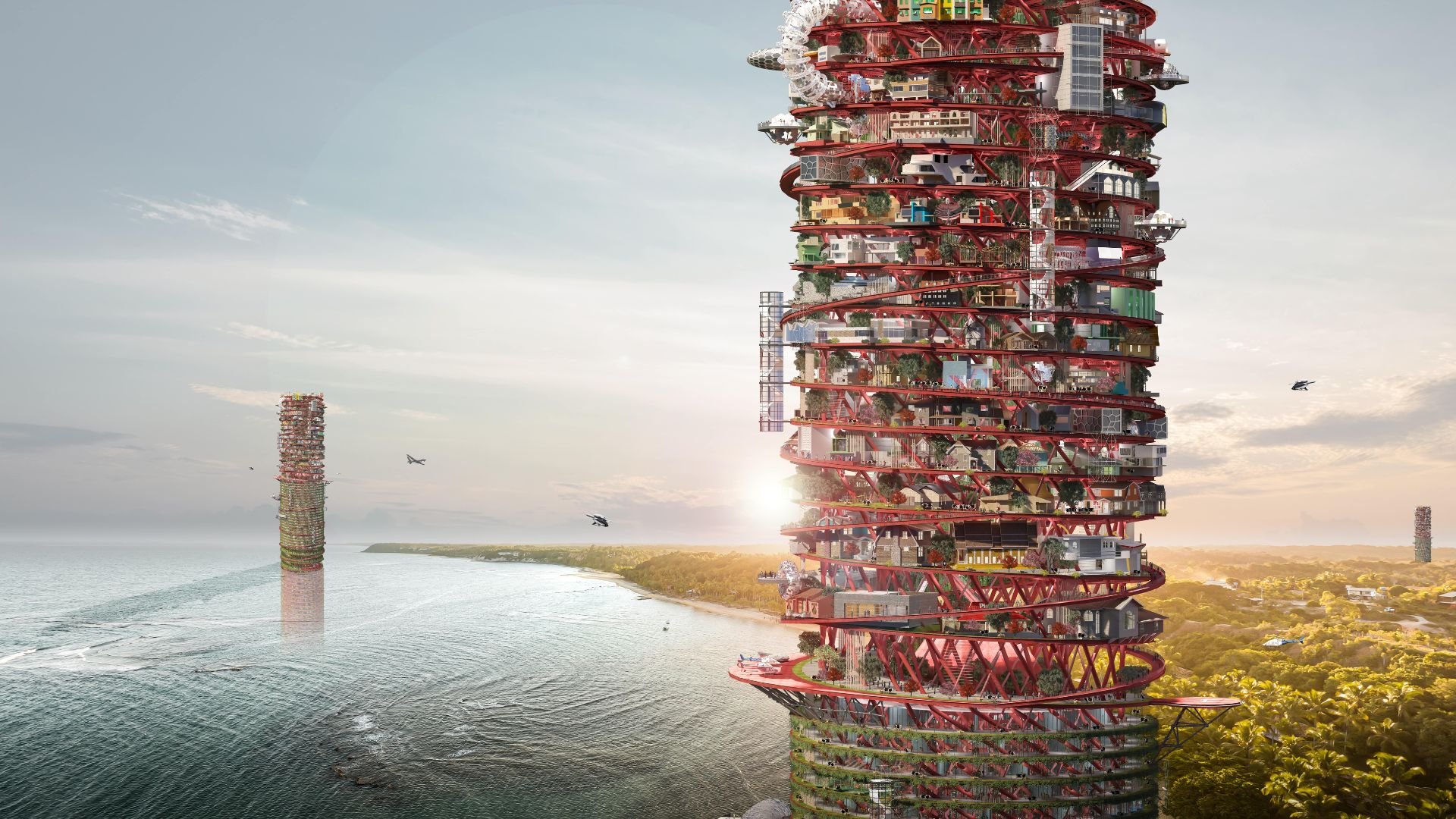Always on his feet and ready to speak his mind, Bruno Gomes, Senior Design Architect at Dewan Architects + Engineers, Dubai is one of the friendliest people you will meet. At times, you will find him lost in his own thoughts, but nonetheless, he is someone you can indefinitely count on.
Last year, he dipped his hands into the uncharted and fascinating world of digital architecture, of which he says, “I had the privilege of designing Babel Tower 4.0, which is considered the first architectural NFT in the GCC. We are hoping, in coming times, it will become a Metaverse dedicated to the design community. During the same time, I was also designing Dewan’s first office in the Metaverse that is located in Decentraland.”
From being a child from a Portuguese village with no inkling of what an architect is, to now achieving feats in the technological era of architecture, Bruno has come a long way. Even so, building has always been a part of his life. As a young boy, having a myriad of materials at his disposal to build play-structures with his cousins nudged him into this direction.
“I have memories of using straw that was in the neighbor’s field to build tents similar to the ones the Native Americans built in the past. Although that didn’t end well, because the farmer eventually complained to our parents,” he laughs. “We would also mold the elm leaf blackberry plants to create caves where we could hide. The light and shadow patterns created by the plants were impressive.”
It was these acts done in naivety that helped him exercise free rein on thinking, that in turn, laid the foundation for Bruno’s curious nature and instinct to tinker and build. The now-architect’s father, a carving artist, also played a pivotal role in opening his mind to varied avenues. “My father was a specialist in sacred art and one of his inspirations was a collection of books with paintings of different styles and origins. I spent many hours looking at these books, dreaming of being able to see the original paintings and visiting the museums where they were located one day. I’m not sure if architecture can be called art like painting, but these books pushed me to translate ideas on a piece of paper, on a sculpture or even a building”, he says, nostalgically.
Serendipitously, during his final year of university, Bruno had an opportunity to study in Italy. There, he did gape at some of the sculptures that carved his career path, and was left overwhelmed by Italian history. His university life remained unconventional otherwise, too.
“I was one of the 50 first students of the University of Minho in Portugal, an extension of the University of Porto, meaning students and professors were, both, learners. We were a family tied together by our common interest in architecture. There I learnt to study the world and create new ideas that could bring about a positive impact. Interestingly, some of the teachers I ‘hated’ are now the ones I admire the most for the passion they put into their work,” he testifies.
Beginning his professional journey in Portugal, the architect proudly reflects back on how his definition of architecture was shaped by his native land. “In Portugal, architecture is a way of life in which intensive work is carried out to build sensitive, intelligent and integrated buildings. Fortunately, architecture is still thought of as the art of building and not the art of selling images there,” he avers.
Five years later, he moved to Spain to work with architects unafraid of experimentation. There he picked up the lesson of creating illusions. “I learned that a ‘lie’ is not bad, if it creates memories and novelty – optimism was the biggest teaching.”
Spain was also the first point of contact to the Middle East for him. For ten years, he worked on Middle Eastern projects, mostly in Kuwait, that were of varied typologies and scales. In 2016, his curiosity got the best of him and he shifted to Dubai.
His experience in Spain, Italy and Portugal, helped him a great deal in adapting to UAE’s multicultural design scene. “My adaptation to the Middle East architecture was quite seamless, as the Portuguese share the vernacular architectural elements such as patios, tiles, the presence of water and natural lighting with the Arabs. Having close contact with the south of Spain, also gave me exposure to the best examples of Arab architecture, such as the Alhambra in Granada or the mosque / cathedral in Cordoba”, he avers.
Design Process and Inspiration
When asked to name the architects he looks up to, Bruno immediately utters Alvaro Siza’s name, yet again reflecting his pride for his Portuguese heritage. Swiss architect Peter Zumthor is a close second. Although lately, the architect’s influences have taken a different direction.
“In recent years my interests have shifted to some lesser known but equally significant architects. Cesar Manrique with his unique and respectful integration with Lanzarote´s amazing topography, Fernando Higueras with his experimental architecture full of symbolism, Geoffrey Bawa and his contextual architecture and Lacaton & Vassal with their intelligent and informed proposals are some of the architects I have studied lately. Following them closely is my way of finding the best design solutions”, he reveals.
Personally, Bruno refuses to have a fixed ‘philosophy’ to design; it’s his process that is his gospel. “I believe that for each project there are always several perfect answers. Reading, writing, drawing, making models and renderings, making conversations and such that allow me to have access to information in order to find my perfect answer”, he states.
Supporting his statement with an example, he continues, “Agricultural mountain was a project for the European capital of culture that was born from a conversation between friends about how culture is almost always associated with cities, often ignoring the knowledge of rural people. As a response, we proposed a 5-storey building located outside the city but visible to everyone who approached the urban center and built with straw bales. With this proposal we were able to bring several visitors to an unknown area of the region, and the budget of this project might not have exceeded 12000 euros.”
Babel 4.0 is also a project with a straight-forward design intervention – an infinite ramp that can be used and occupied for other activities. A music academy in Saudi Arabia was conceptualized keeping in mind that a lot of musicians today start their career playing on the streets. Even, the canyon shape of the building was attributed to the street, along with being inspired by the local topography. It is also an efficient form for acoustics.
“My motivation is based on being able to build my proposals. For me, a project is not divided into phases, it’s a continuous process that starts with an idea and ends when people occupy the built space. I believe that when we are conceptualizing ideas, we must always take into account technical aspects and when we are more focused on technical aspects, we must have a concept that can guide us. Carlo Scarpa´s buildings are a good example about how every single detail is based on a strong concept”, he enlightens.
“Sustainability is not just about using the right materials or efficient machines, sustainability is conceiving designs that people use to the fullest. Sustainability starts by questioning the brief received by the client and guiding him to have a building that meets his actual needs. A sustainable building without proper use has no value to me. The Place León Aucoc, designed by Lacaton & Vassal,is a good example of sustainability where the architect convinces the municipality that the existing square has a value that adapts to the needs of that moment. Often ¨not drawing¨ anything is the best example of sustainability.”
Advice To His Younger Self
“My recommendation would be to always be an ¨informed unconscious¨ because everything is possible if we believe in our ideas. Without unconscious people life would be boring!”








